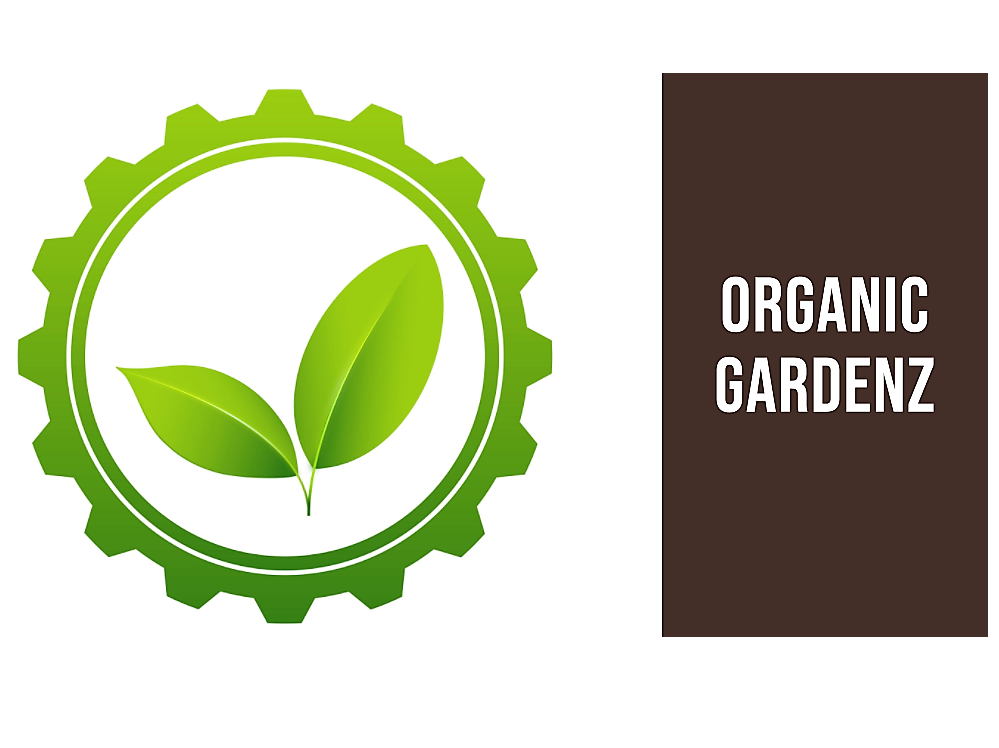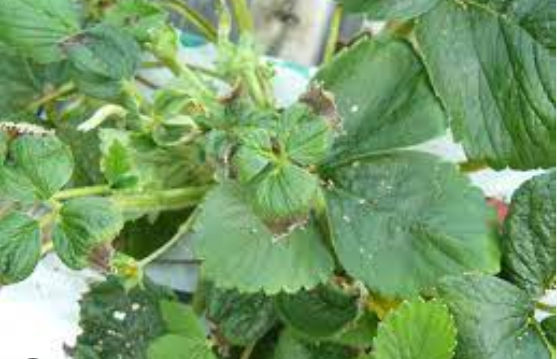Calcium Deficiency During Flowering
The Importance of Calcium in Plant Growth and Development
Calcium is one of the essential macronutrients required by plants for optimal growth and development. It plays a vital role in numerous physiological processes, including cell division, cell wall formation, enzyme activation, and signal transduction.
Calcium is involved in regulating the transport of other nutrients such as nitrogen and potassium within the plant. Calcium also plays an important role in flower development.
Calcium’s movement into developing flowers determines their size, structure, and color. Additionally, adequate calcium levels promote successful pollination and fertilization of flowers.
Definition of Calcium Deficiency During Flowering
Calcium deficiency during flowering occurs when there is an inadequate supply of calcium available to the plant during this critical stage of growth. This can lead to a range of symptoms that negatively impact flower production and quality.
Overview of the Impact of Calcium Deficiency on Flowering
The effects of calcium deficiency on flowering can be significant. Plants with insufficient calcium levels may produce fewer flowers or exhibit poor flower quality with distorted shapes or colors.
The production time frame may also be shortened as it limits bud development which reduces overall yield. In fruit-bearing plants like tomatoes or peppers, calcium deficiencies can lead to a disorder called blossom end rot where black necrotic lesions appear at the base (or blossom-end) where the fruit attaches to the plant stem.
This condition severely impacts yields by rendering much or all unmarketable. Overall, adequate calcium levels are necessary for healthy flowering plants – taking steps to prevent deficiencies early on can save you from losing both yield quantity and quality!
Causes of Calcium Deficiency During Flowering
Soil pH Levels and Their Effect on Calcium Availability
The soil pH level plays a significant role in the availability of calcium for plants. When the soil is too acidic, it reduces the solubility of calcium, making it less available to plants. On the other hand, when the soil is too alkaline, it can cause calcium to become immobilized and unavailable for uptake.
Ideally, a neutral to slightly acidic soil with a pH level of 6.0-7.5 is best for ensuring adequate calcium availability during flowering. To determine soil pH levels, gardeners should use a simple soil test kit or send samples to a laboratory for analysis.
If the results show that the soil pH level is not within the ideal range, gardeners can use lime or sulfur to adjust it accordingly. For acidic soils, adding lime will help raise pH levels while sulfur will lower them for alkaline soils.
Excessive Use of Potassium and Magnesium Fertilizers
While potassium and magnesium are essential nutrients required by plants during flowering, excessive use or imbalanced application can lead to calcium deficiency. This is because potassium and magnesium compete with calcium for uptake in plant roots. When there are high levels of potassium and magnesium in the soil due to fertilizer application or naturally occurring sources such as manure or composts rich in these nutrients, they may outcompete calcium leading to its deficiency during critical stages such as flowering.
To prevent this problem from occurring, gardeners should ensure they apply fertilizers containing balanced amounts of all essential nutrients including potassium (K), magnesium (Mg), and calcium (Ca). Additionally, it is recommended that fertilizers be applied at rates recommended by experts based on crop needs.
High Levels of Ammonium in Soil
Ammonium is a common nitrogen source that gardeners use to fertilize their plants. However, when applied excessively or imbalanced with other nutrients, ammonium can reduce the availability of calcium for plant uptake. High levels of ammonium in the soil can also cause soil pH to become acidic, which further exacerbates calcium deficiency.
To prevent this problem from occurring, gardeners should ensure they use fertilizers containing balanced amounts of all essential nutrients including nitrogen (N), potassium (K), magnesium (Mg), and calcium (Ca). Additionally, it is recommended that gardeners avoid using excessive amounts of manure to fertilize their crops as it can contain high levels of ammonium and other nutrients that may lead to calcium deficiency.
Drought Conditions Leading to Reduced Uptake
Drought conditions can negatively impact plant growth and development by reducing the ability of roots to absorb water and nutrients from the soil. Since calcium uptake is dependent on an adequate water supply for transport from roots to leaves and flowers, drought conditions can lead to reduced uptake and subsequent deficiency. To mitigate the effects of drought on plant growth during flowering, gardeners should ensure they provide adequate moisture through proper irrigation techniques such as drip irrigation or watering during early morning hours when evapotranspiration rates are low.
Mulching around plants can also help retain soil moisture and reduce water loss due to evaporation. Judicious use of wicking mechanisms or hydrogel applications may help retain moisture around root zones in particularly hot or dry regions.
Symptoms of Calcium Deficiency During Flowering
Calcium is an essential micronutrient that plays a critical role in maintaining the structural integrity of plant cells. A deficiency in calcium can manifest in several ways, ultimately leading to reduced flower production. The following are some of the most common symptoms that indicate a lack of calcium during flowering.
Leaf Curling, Yellowing, and Necrosis
One of the first signs of calcium deficiency is curling leaves. As the deficiency progresses, leaves may begin to yellow and brown, eventually leading to necrosis or death.
In extreme cases, leaf drops may occur. The leaf curling is caused by a reduction in cell wall strength and elasticity which can cause wilting as well.
The lack of calcium disrupts the plant’s ability to control water uptake and distribution effectively. This results in an imbalance between water absorption and transpiration rates that lead to leaf curling, yellowing, or necrosis.
Stunted Growth and Reduced Flower Production
Another symptom of calcium deficiency during flowering is stunted growth. Plants will fail to grow at their expected rates due to improperly formed cell walls which are less rigid than they ought to be when there’s insufficient calcium available for uptake by roots. Additionally, low levels of calcium affect flower development leading to poor quality flowers with reduced size or number depending on how advanced the deficiency is when it occurs during flowering stages.
Blossom End Rot
Blossom end rot (BER) affects many fruits such as tomatoes and peppers among others but also ornamental plants like roses amongst others if there’s a low amount of potassium available as well because it serves at regulating water movement throughout the plant structure. This symptom appears as dark-brown spots on fruit starting from their blossom end which then spreads over time until it covers much more surface area than just around the affected area around the flower. Calcium deficiency during flowering can have severe consequences for plant growth and development.
It is essential to monitor plants’ nutrient levels and take appropriate measures to prevent deficiencies from occurring. Treating calcium-deficient plants with a foliar spray rich in calcium or adding calcium-rich fertilizers to the soil will help supplement the missing micronutrient that can reduce or eliminate all of these symptoms.
Prevention and Treatment Options for Calcium Deficiency During Flowering
Soil testing to determine pH levels
One of the most effective ways of preventing calcium deficiency in plants is by conducting soil testing to determine pH levels. Calcium is more readily available to plants when soil pH ranges between 6.5 and 7.5. Soil that is too acidic or alkaline can inhibit the uptake of calcium, leading to deficiencies in flowering plants.
To correct soil pH levels, agricultural lime can be added to acidic soils while sulfur can be added to alkaline soils. It’s important to note that only small amounts of these amendments should be used at a time, and the soil should be retested regularly.
Balanced fertilization with appropriate amounts of potassium, magnesium, and calcium
Balanced fertilization with appropriate amounts of potassium, magnesium, and calcium is another effective approach for preventing calcium deficiencies during flowering. Applying excess potassium or magnesium fertilizers can reduce the availability of calcium in the soil.
Furthermore, specific fertilizer formulations designed for flowering plants may help address low-calcium conditions. These fertilizers contain higher amounts of calcium than traditional formulations while ensuring a balance with other essential nutrients.
Use of foliar sprays containing calcium during critical stages such as flowering
Foliar spray application containing soluble forms of calcium during critical stages such as flowering may also enhance uptake and prevent deficiencies. Typically applied as a spray on leaves, foliar sprays are rapidly absorbed into the plant tissue where they become available for use. However, it’s important not to rely solely on foliar sprays as a long-term solution since they don’t address underlying issues such as nutrient imbalance or low soil pH.
Water management techniques to ensure adequate moisture for uptake
Water management techniques are another way growers can prevent calcium deficiencies during flowering. Calcium uptake can be affected by water stress during critical stages, such as flowering, leading to deficiencies.
Maintaining adequate soil moisture levels through irrigation is key to preventing water stress and promoting calcium uptake. Mulching can also help maintain soil moisture, reducing the effects of drought stress on plants.
Preventing calcium deficiency during flowering involves a combination of measures such as soil testing and pH correction, balanced fertilization with potassium, magnesium and calcium, use of foliar sprays containing calcium as well as proper water management techniques. By practicing these measures effectively growers can ensure their plants receive adequate nutrients for optimal growth and development.
Conclusion
Summary of Key Points Regarding Calcium Deficiency During Flowering
Calcium is an essential element in plant growth and development, playing a critical role in cell wall structure, enzyme activity, and signal transduction. Calcium deficiency during flowering can lead to reduced flower production, stunted growth, and blossom end rot. The causes of calcium deficiency during flowering include soil pH levels, excessive use of potassium and magnesium fertilizers, high levels of ammonium in the soil, and drought conditions leading to reduced uptake.
Symptoms of calcium deficiency include leaf curling, yellowing, and necrosis. To prevent calcium deficiency during flowering farmers should test the soil pH levels before planting crops to determine if it’s optimal for the plants they want to grow.
Importance of Proper Nutrient Management Practices to Avoid Deficiencies
Proper nutrient management practices are essential for avoiding deficiencies such as calcium deficiency during flowering. Farmers should always consider testing their soils before planting crops to ensure adequate nutrient availability for healthy plant growth.
Balanced fertilization with appropriate amounts of potassium, magnesium, and calcium can help ensure adequate nutrient uptake by plants. Foliar sprays containing calcium during critical stages such as flowering are another effective method that farmers can use to treat or prevent deficiencies.
Water management techniques are also crucial in ensuring adequate moisture for uptake by plants. Farmers must ensure that their crops have enough water without overwatering them since overwatered plants are prone to root rot due to oxygen deprivation.
Future Research Directions in Understanding the Role of Micronutrients in Plant Growth and Development
Research on micronutrients such as calcium is an ongoing process aimed at improving crop yield while reducing nutrient depletion from agricultural soils. Future research directions on understanding the role of micronutrients in plant growth and development could focus on identifying ways to improve nutrient bioavailability, genetic improvement of crop varieties for better nutrient uptake, and development of new fertilizers with enhanced nutrient uptake in crops.
Calcium deficiency during flowering can result in significant yield losses and negatively affects crop production. Proper nutrient management practices such as soil testing, balanced fertilization, foliar sprays, and water management techniques are crucial for avoiding deficiencies.
Future research on micronutrients will help improve crop yields and reduce nutrient depletion from agricultural soils. While these findings may seem daunting to farmers, we should take comfort in the fact that with proper management practices and continued research efforts, we have the power to improve our agricultural systems’ sustainability for future generations.

